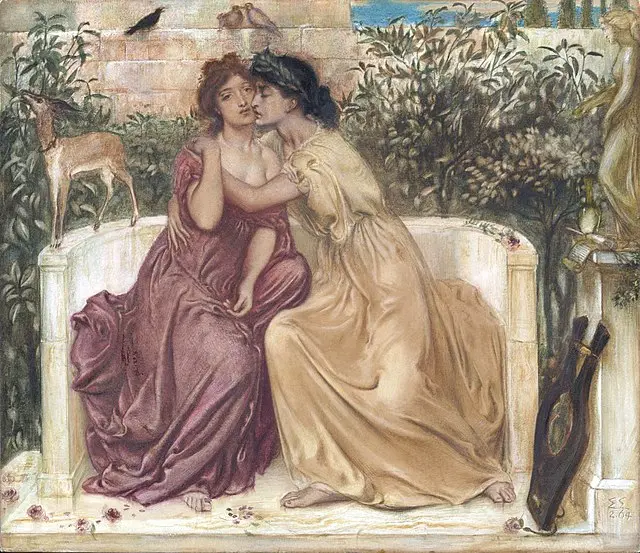
Whilst the Ancient World has no shortage of queer figures, Sappho of Lesbos stands out in her role as a queer woman. Of course, Sappho’s queerness plays an important role in how she has been remembered, however her fame as a female writer of any sexuality is remarkable.
Sappho’s primary output was love poetry, often directed towards women. Her imagery still resounds today, being the first to describe things as ‘bitter-sweet’ or feeling ‘lovesick’. Whilst she also wrote about love of men throughout history, scholars have attempted to erase her outstanding queer aspects.
Whilst she also wrote about love of men throughout history, scholars have attempted to erase her outstanding queer aspects.
Ancient writers repeated the tale of her suicide over the affections of a ferryman. Medieval scholars claimed her husband was ‘Kerkylas of Andros’ – possibly a Greek penis joke. Victorians explained away her close relationship to girls by saying she was headmistress of a finishing school.
Sappho’s poetry is largely lost – about 650 lines of her verse surviving of an estimated 10,000. However, her modern influence is substantial. Despite the attempts of male historians, her nationality and name have come to define female queerness – we derive both the terms Lesbian and Sapphic from her. Sappho is the model not only for queerness, but for love overall.


